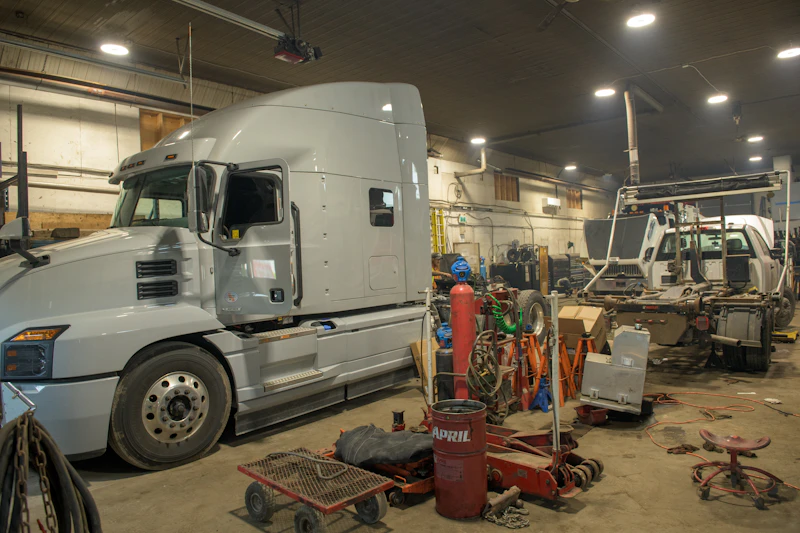Exhaust And Emission Aftertreatment: Everything You Need To Know

Your aftertreatment system is a critical part of your heavy-duty truck. Not only does it protect our atmosphere from the harmful emissions produced by your environment, but it keeps you and your passengers safe from them as well. Unfortunately, after-treatment systems can be quite complex and, as such, are often overlooked by drivers and fleet managers solely because they don’t understand them. To remedy this issue, we’ve put together a guide with all the information you’ll need to know about your after-treatment system.
The Financial Impact Side of Things
It may feel like your heavy-duty truck has indigestion when any part of the after-treatment system on your truck gets blocked. After some time, you may not first hear the noise, but you will. After that, what? Your efficiency and engine performance start to decline over time, and your costly emission components eventually begin to suffer damage. Your bottom line may ultimately be impacted by unanticipated downtime and expensive repairs.
A Brief History of After-Treatment
As emissions management is a relatively recent development, let's look at some historical context to put things in perspective. In the 1950s, air pollution became an irrefutable fact, and by the early 1960s, even waiting in rush-hour traffic might make you queasy. Large cities eventually began to suffer from pollution, and governments in industrialized nations began to take action.
As a result, the US government created laws giving it the power to deal with pollution. It started issuing emissions policies in 1974. These regulations included stringent requirements for ultimate results but permitted a phased approach to give producers the time they needed to develop practical solutions.
The Introduction of Emissions Control Components
The heavy-duty truck sector started to see some significant regulation in the early 2000s (about 30 years after the start of heavy-duty truck emissions control). Of course, manufacturers were aware of the impending rules and were ready. Most of them implemented the Exhaust Aftertreatment System (EATS) to comply with such restrictions.
The implementation of heavy-duty truck emissions regulations likewise happened gradually. The EGR (Exhaust Gas Recirculation) system was the first element of the EATS to be introduced. Controls with a DPF (Diesel Particulate Filter) were implemented in 2007; a procedure known as SCR was added in 2010. (Selective Catalytic Reduction).
Sounds challenging? It is (but we hope to uncomplicate it for you). And you're aware that everything clever and complex need regular maintenance to avoid giving you problems. The method is also intriguing if you learn about it step-by-step to keep it straightforward. As you read on, we hope you will concur.
What Are The Major After-Treatment Components?
The after treatment system reduces the performance effect by cleaning up particles and exhaust gasses (nitrogen oxide). Visualize the system as an exhaust stream. Because it leaves a part of its poisons behind at each step, it becomes a bit cleaner. You'll understand what we're talking about if you've ever seen a filthy DPF filter.
The Diesel Oxidation Catalyst (DOC)
The exhaust from the engine initially passes into the DOC, where it is oxidized to reduce carbon monoxide and hydrocarbon emissions.
Diesel Particulate Filters (DPF)
Larger particles are removed from the exhaust stream by the DPF. This is where the DPF excels, removing over 99 percent of particles. This explains how a thick coating of soot may accumulate in the DPF.
Soot may be a significant issue. As the soot layer in the DPF becomes thicker, it creates back pressure and limits forward motion. Up until the point at when you start a regeneration to remove the soot, this back pressure will keep increasing.
SCR System (Selective Catalytic Reduction)
The Selective Catalytic Reduction (SCR) system, the next component, receives degraded urea together with the exhaust. Most of the residual NOx is removed at the SCR step. The active chemicals in the SCR react with the degraded urea and exhaust gases to produce carbon dioxide and water vapor. This is the tailpipe's final product.
Final words
Diesel-powered trucks' after-treatment systems are essential to their performance, and their upkeep is often neglected, usually due to ignorance. As we previously said, blocking any part of the after-treatment system would cause an engine's performance, efficiency, and costly emission components to sustain damage. Your heavy-duty truck will suffer due to the unanticipated downtime and expensive repairs, which will negatively affect your revenue.
You can manage your after-treatment system by knowing what these systems do and how they affect your truck’s overall performance. You may get assistance from your dealer or a professional, or you can quickly (and more economically) perform it yourself using OTR diagnostics.


.webp)
.webp)